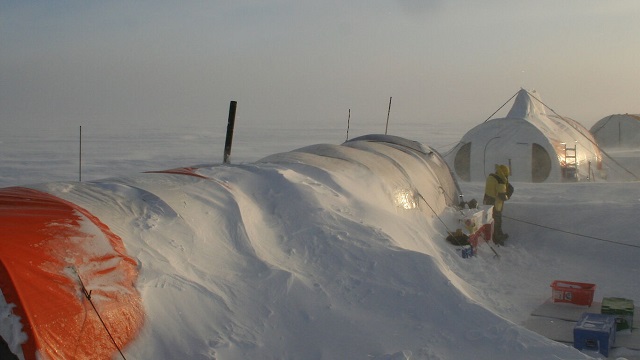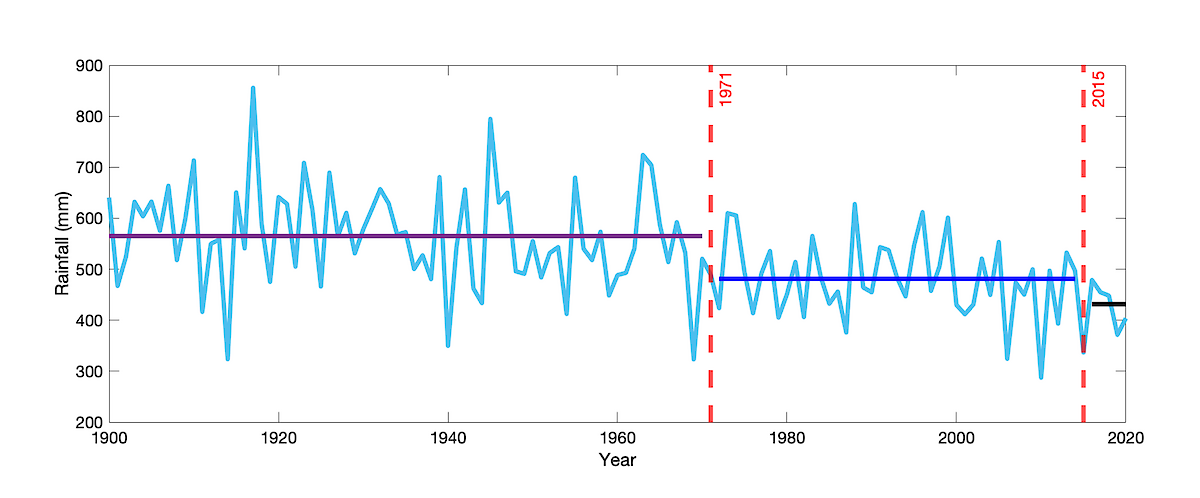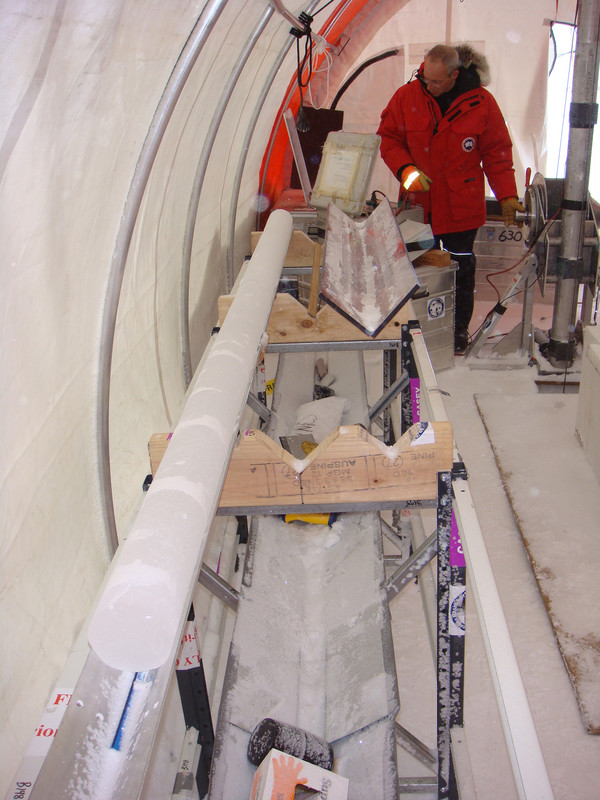Antarctic scientists have analysed a 2000-year ice core record to find the link between Australian drought and greenhouse gases.
Learn about Antarctic science and how research there impacts Australia in this resource for Year 8 and 10 Chemistry and Earth and Space science students.
Word Count: 842

Ice cores tell the stories of the past
Scientists in Antarctica drill down through layers of ice and pull out a long cylinder of ice called an ice core. Along this sample are layers of ice that have built up over time. By studying the molecules within the layers of ice, scientists can learn about the environment at different periods of time throughout history.
The deeper the sample, the further back in time we can see.
Scientists look for the ratio of isotopes such as oxygen-18 (18O) or deuterium (2H) in the water molecules to identify the seasonal cycles throughout the years. High levels of these isotopes indicate summer and low levels indicate winter. Scientists can then count these back through the years.
Similar cycles are also found in sea salts – more salt is present in the snow during winters.
By detecting these very clear seasonal cycles and counting back, scientists can look at the thickness of each layer and (aside from the regular thinning, which they take into account) they can see how the year-to-year snowfall has changed over time.
In certain areas of Antarctica, such as the Law Dome in East Antarctica, scientists can get ice cores with such a clear resolution that they can date single years in the core. This means they can see what has been happening on a year-to-year basis.
Who said time travel isn’t possible?
From Antarctic ice to Australian rain
The Law Dome core goes down almost to the bedrock. It’s 1,200 metres long and stretches back about 90,000 years. But because of the way glaciers thin over time due to the flow of the ice, as you go down deeper, the bulk of the core covers the last 4,000–10,000 years, and then the earliest 70,000 years is compressed in the bottom few tens of metres.
Scientists have now analysed back 2000 years in the East Antarctic ice core sample. From this, they found that the drought and reduced rainfall in southwest Western Australia since the 1970s are likely due to greenhouse gas emissions from human activity.
The study indicated that the rainfall reduction is unlikely to be caused by natural variation alone, suggesting drier conditions could become the ‘new normal’ as emissions continue to rise.
This has implications on many areas of life in Western Australia, including water management and agriculture.
Also: Fire, floods and ice
The research, led by scientists from the Institute for Marine and Antarctic Studies, the Australian Antarctic Division and the Australian Antarctic Program Partnership, extends previous work using a 750-year ice core record of snowfall from Law Dome, near Australia’s Casey research station.
Australian Antarctic Division glaciologist and paleoclimatologist, Dr Tas van Ommen, said that between the 1970s and 2000s there was a 15-20% decline in winter rainfall in southwest Western Australia. At the same time, a 10% increase in snowfall in Law Dome.
This link between increased snowfall in Antarctica and reduced rainfall in Australia is known as a ‘teleconnection’.
“Using the 750-year ice core record we found that since the 1970s, atmospheric pressure systems south of Australia have directed more warm, moist air towards Law Dome, resulting in higher snowfall, while also bringing cool, southerly, dry winds and reduced rainfall to parts of southwest Western Australia,” Dr van Ommen said.
“Our new study using an extended ice core record shows that while natural variations can produce such drought events, they are very rare.”
Natural or human-caused climate change?
The team led by Yaowen Zheng, from the Institute for Marine and Antarctic Studies, used the ice core record to reconstruct rainfall in southwest Western Australia for the full 2000 years.
Long climate model simulations were then used to investigate the possible roles of natural variability and external climate influences in explaining changes in rainfall.
The rainfall reconstruction showed that the drought connection observed since the 1970s is the only such event since 1250, and one of three droughts of similar duration and intensity in the full 2000 years. The other two droughts occurred in the periods around 400 and 750 CE.

“The reconstruction shows that the rainfall decrease in Western Australia is not unprecedented, but it is unusual,” Mr Zheng said.
“Our model simulations indicate that the droughts that occurred before the industrial revolution may have arisen through natural climate variability.
“However, the simulations also indicate that greenhouse gases from human activity are more likely to be the dominant driver of the rainfall reduction since the early 1970s.
“Nevertheless, natural variability may also have played a role in determining both the timing and magnitude of the reduction in rainfall.”
The ice cores have shown that even the uninhabited continent of Antarctica is affected by climate change, and can explain the extreme conditions we are facing in Australia. They provide yet another piece of evidence to persuade us to change our actions now if we want to preserve the world in which we live.
The research is published in Climate of the Past.
Find out more about the work of the Australian Antarctic Division. Read the press release here.
Login or Sign up for FREE to download a copy of the full teacher resource






